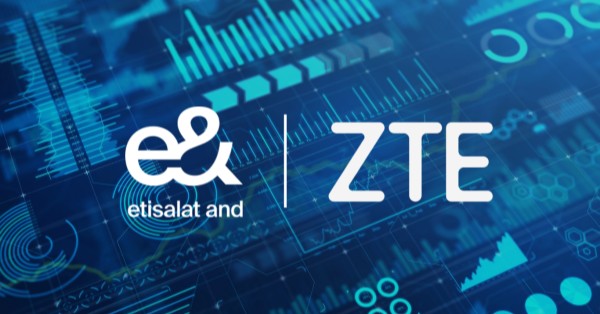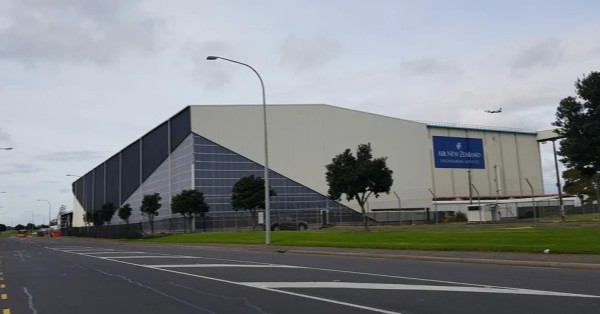Sustainability is no longer an optional initiative in the telecom industry, it is a necessity. With increasing regulatory pressures, consumer demand for greener operations, and the rising cost of energy consumption, telecom operators must find ways to reduce their carbon footprint. One of the most effective ways to achieve this is through smart network management. By leveraging advanced inventory tracking, optimizing asset utilization, and implementing intelligent procurement strategies, telecom companies can reduce energy waste, minimize e-waste, and enhance operational efficiency.
As a leader in network inventory management and automation, VC4-S2C (Service2Create) optimizes telecom operations by providing real-time network inventory tracking, automated network reconciliation, and AI-driven capacity planning, helping operators cut down unnecessary energy use and hardware waste
The Carbon Footprint of Telecom Networks
Sources globally have raised concerns and awareness around sustainable telecom practices, the GSMA is notable in this regard. Outlining and reporting on best practice annually — in practice this keep the pressure mounting on operators to increase capacity without increasing energy waste. So, what are the contributors to carbon emissions that are concerning:
- Data Centers: These facilities require massive amounts of electricity to power and cool servers, significantly contributing to carbon emissions.
- Mobile Networks: Base stations and antennas constantly consume energy, especially in 5G deployments where power demand is higher.
- Manufacturing and Logistics: The production and transportation of telecom hardware generate considerable CO₂ emissions.
- E-Waste Generation: Outdated or discarded equipment adds to environmental pollution when not properly recycled.
How Telecom Operators Can Take Strategic Actions to Reduce Their Carbon Footprint
Understanding the carbon footprint of telecom networks is just the first step. To actively mitigate environmental impact and transition towards greener operations, telecom operators must adopt a multi-faceted sustainability strategy that covers infrastructure, energy efficiency, procurement, and regulatory compliance. Let’s take a look at the strategies impacting carbon footprints:
Hidden Environmental Cost of Inefficient Inventory Management
Telecom networks rely on vast infrastructures of fiber optic cables, base stations, and data centers, all of which require careful resource management. However, poor inventory management results in:
- Excess hardware and over-purchasing, leading to increased e-waste and unnecessary manufacturing emissions.
- Underutilized network assets, causing excessive energy consumption.
- Higher carbon emissions from excessive transportation, procurement, and disposal processes.
Energy Efficiency in Network Operations
One of the largest contributors to a telecom operator’s carbon footprint is energy consumption. From powering base stations to maintaining data centers, inefficient energy use significantly impacts operational costs and the environment.
Future Trends: AI and Automation in Green Telecom
The next wave of sustainability in telecom will be driven by AI and automation. Emerging technologies will enable:
- AI-powered predictive maintenance: Detecting failing components before they waste energy.
- Automated power scaling: Dynamically adjusting power usage based on traffic demand.
- Network self-healing: Minimizing downtime and inefficient failover scenarios.
As telecom operators move toward AI-driven network management, the environmental impact of connectivity services will decrease significantly. This strategy will be fairly easy to adopt as most employees are quite keen to use AI in their daily operations.
The Business Case for Sustainability in Telecom
Sustainability is not just about regulatory compliance and reducing carbon footprint—it also offers tangible business benefits. Which can be attractive externally for a number of other reasons including:
- Regulatory Compliance: Avoid fines and strengthen corporate credibility by meeting environmental regulations.
- Improved Brand Reputation: Consumers and enterprises favor eco-conscious service providers.
- Attracting Green Investments: Investors prioritize companies with sustainability-driven operations.
- And last but not least – Lower Operational Costs: Reducing energy consumption and resource waste leads to major OPEX savings. In the next section we explore how partnering with the right businesses can help facilitate OPEX savings. VC4 is a perfect example of such a partnership.
VC4 is making strides in Carbon Reduction and you can too
A sustainable future for telecom is a necessity that is hard to ignore, but with VC4 as your strategic partner, you can feel comfortable knowing that you are taking many steps in the right direction to reduce your carbon emissions from a operational and ethical view point for your business.
VC4 Service2Create (S2C) platform manages data for any network infrastructure and topology and provides an end-to-end view of your multi-vendor networks. It provides accurate data to support your business and operational units – accelerating maintenance and support, and helping you plan more effectively.
Here’s how the S2C platform can help realize carbon reductions:
AI – Driven Technology
- Advanced AI-driven analytics predict asset performance and optimize power consumption.
- Predictive AI models improve efficiency by identifying underutilized network assets.
- AI-powered energy tracking ensures telecom networks consume only what they need.
- AI-driven energy insights to help telecom operators identify high-consumption assets and replace them with efficient alternatives.
- AI-based network lifecycle monitoring to schedule proactive maintenance and prevent inefficient energy use.
Lifecycle Management
- Comprehensive lifecycle management ensures sustainable procurement, usage, and recycling of telecom hardware.
- Lifecycle management solutions to extend the useful life of network equipment.
- Automated asset management ensures hardware is used efficiently and doesn’t become obsolete prematurely.
- Lifecycle asset management extends the useful life of equipment, reducing unnecessary replacements and e-waste
Automation
- Automated power distribution optimization ensures energy-efficient network operation.
- Centralized network asset tracking to prevent unnecessary hardware purchases and overstocking.
- Remote network monitoring reduces the need for on-site visits, cutting fuel-related emissions.
- Automated service provisioning minimizes manual intervention and enhances operational efficiency.
- Automated network planning tools to reduce redundant infrastructure and lower emissions.
Integration, Analysis and Reporting
- Integration with sustainability compliance frameworks enables real-time reporting on carbon emissions.
- Predictive analytics to reduce energy-intensive asset replacements.
- Seamless GIS integration to plan network expansions efficiently, reducing unnecessary infrastructure deployment.
- Real-time inventory tracking to optimize resource allocation and prevent unnecessary hardware production.
Lean Green Machine
What are you waiting for? Why not contact VC4, and see if they can help to meet your unique challenges and opportunities in creating a sustainable operation with their flagship platform – Service2Create (S2C).
To recap VC4 offers:
- End-to-End Network Visibility: Provides a single source of truth for all network assets—physical, logical, and virtual—ensuring optimized energy use and resource allocation.
- AI-Driven Energy Optimization: Identifies high-power-consuming network elements and recommends intelligent power-saving alternatives, reducing unnecessary energy expenditure.
- Automated Network Reconciliation: Continuously synchronizes real-time network data with inventory records, preventing over-provisioning and redundant deployments.
- Lifecycle-Based Asset Management: Extends the useful life of network equipment through predictive maintenance, reducing e-waste and unnecessary hardware procurement.
- Seamless GIS Integration for Sustainable Network Expansion: Enables smarter fiber deployments by considering existing infrastructure, population density, and demand forecasts, minimizing unnecessary excavation and construction-related emissions.
We can’t wait to embark on this exciting sustainable journey with you in order to help reduce your carbon footprint.




























